- June 10, 2019
- No Comment
What Are The Different Forklift Types?

When you’re picking a forklift for your warehouse or worksite, ensuring you get the right one is important. Not only are there several major brands with various models available, there’s also a big selection of different forklift types that are suited to different tasks.
So how do you choose?
In this article, we’ll go over some of the most commonly seen forklift types on Machines4U and what they’re capable of.
Forklift Types
- Counterbalance
- Reach Trucks
- Rough Terrain Forklifts
- Telehandlers
- Sideloaders
- Pallet Jacks
- Walkie Stackers
Counterbalance Forklifts
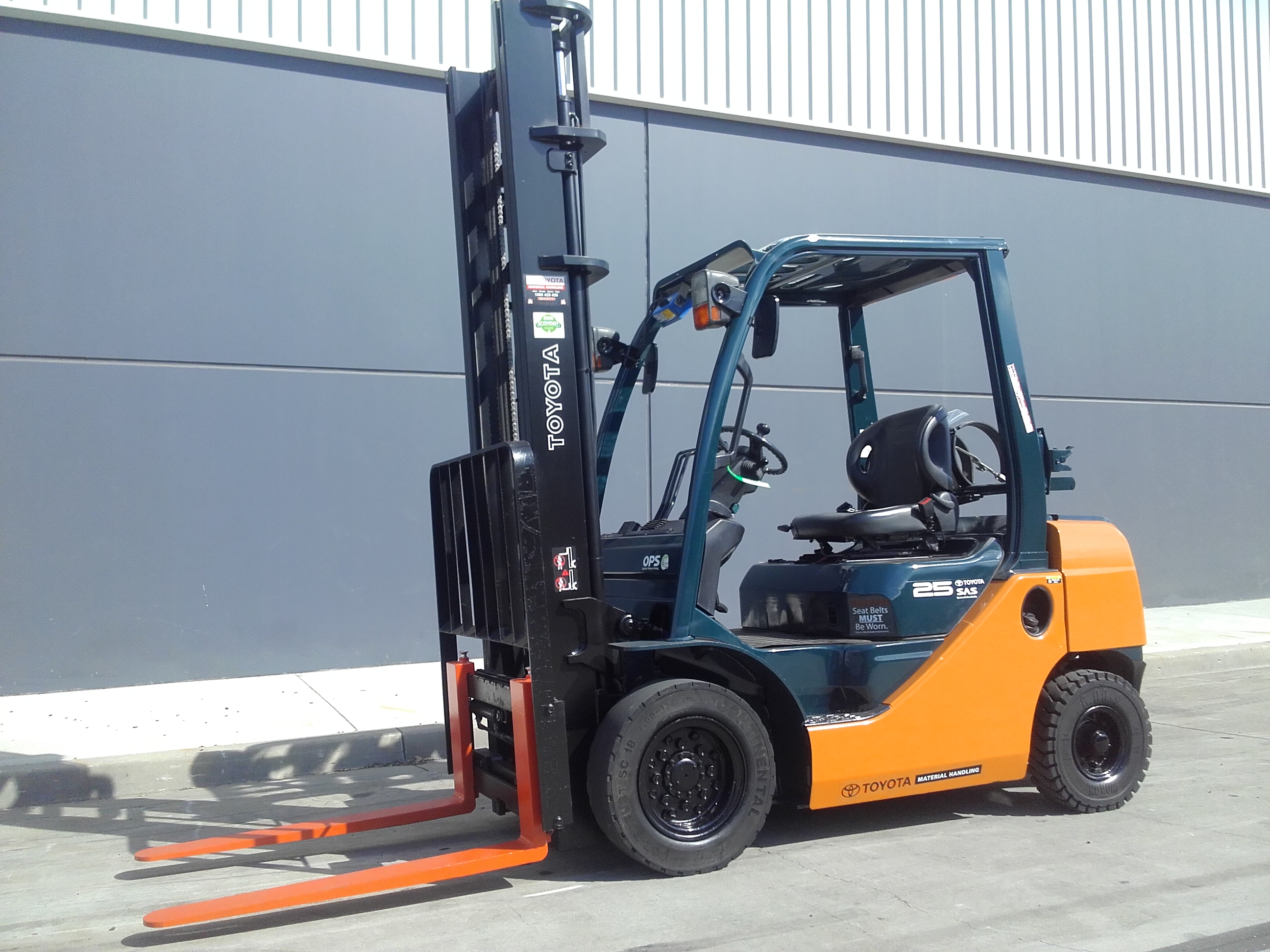
If you were to imagine a forklift right now, 9 times out of 10 you’d probably picture a counterbalance forklift. Easily the most common forklift on the market, counterbalance forklifts are the default choice for most buyers.
Their basic design—a weight attached to the rear of the frame to counterbalance the load at the front—and their straightforward use, make them an ideal choice for most applications. The forks on counterbalance forklifts are on the front of the machine, which makes it easy to line up and drive straight up to the load.
Counterbalance forklifts are available with LPG, diesel or electric fuel sources, all of which have their own pros and cons. One of the major considerations with counterbalance forklifts is when and where you will be using them.
Though they are fairly simple and straightforward to operate, they can be quite bulky and hard to manoeuver. To make navigating tight areas a bit easier, many manufacturers offer 3-wheel models that have a reduced turning circle and higher manoeuverability compared to more traditional 4-wheel models. Primarily for indoor application, they are more than capable of handling outdoor work in most conditions.
If you are looking for a forklift for general use, with no specific needs (like an abnormal reach height or very narrow access) then counterbalance forklifts are the perfect place to start.
Reach Forklift Trucks
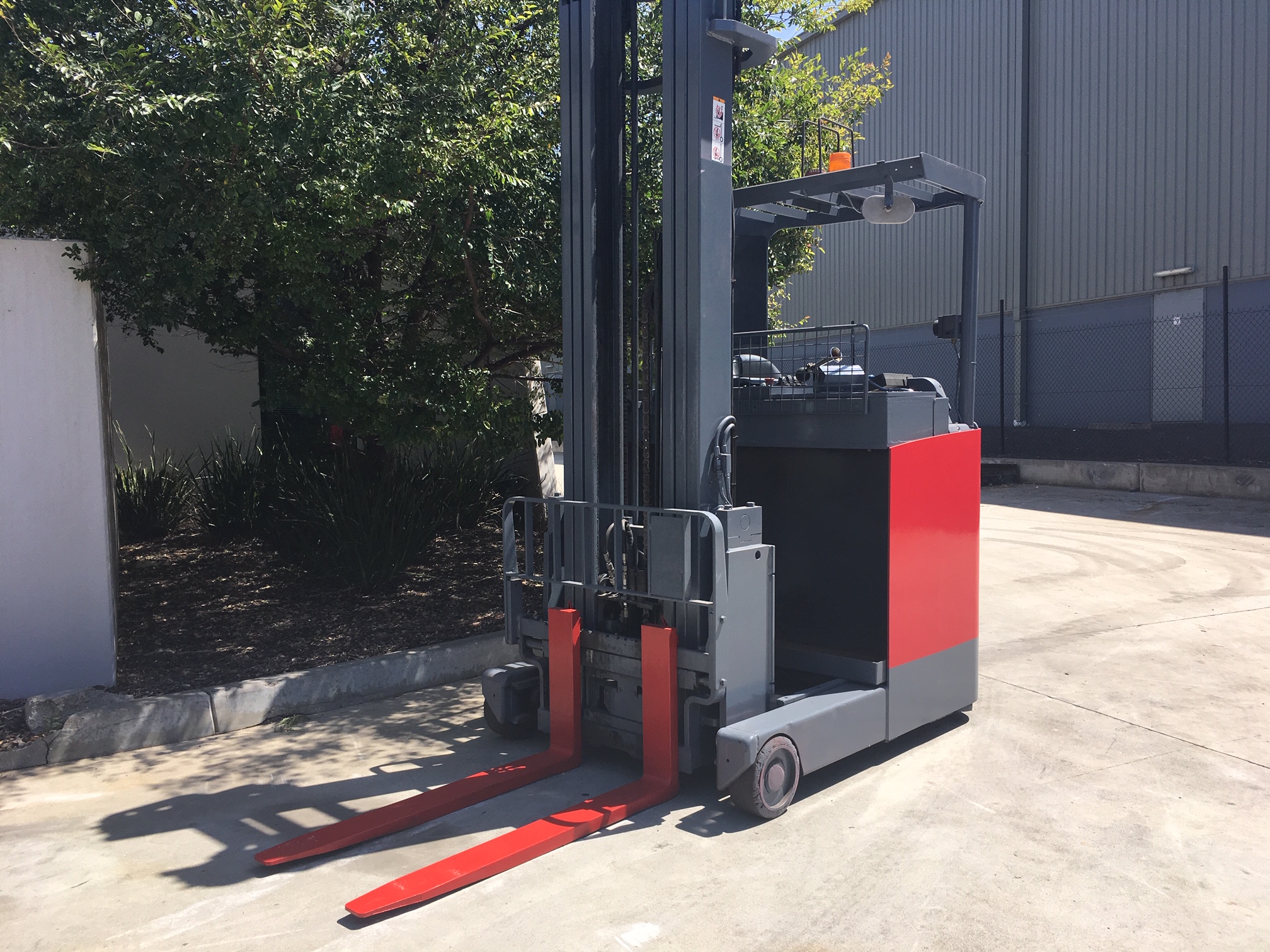
As their name suggests, reach forklifts are designed to reach shelves and areas that other forklifts simply can’t. Their superior reach makes them perfect for large warehouses, with some models able to reach a height of over 10m.
While other forklifts can often reach decent lift heights, these machines are usually bulkier and aren’t ideal for indoor use, unlike reach forklifts. Most reach trucks are designed for use in narrow aisles where there may not be a lot of space to work with.
You’ll find the cab of a reach forklift is generally more open than a counterbalance or rough terrain forklift, providing a better clearance view. This makes it easier to see when you’re picking up loads from the top shelf.
Due to their low ground clearance, reach forklifts are not suited to outdoor use at all.
Rough Terrain Forklifts
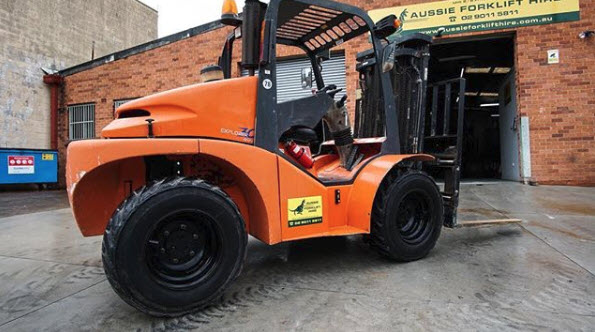
In contrast to reach trucks, rough terrain forklifts are the ideal choice for outdoor work. With heavy-duty tyres and a durable, rugged design, rough terrain forklifts are able to work in a variety of outdoor settings.
Some of the most common applications include:
- Lifting pallets
- Shifting supplies
- Moving materials, like sand, gravel & soil
- Loading & unloading
- Storing objects
But, their versatility exceeds that of many other forklifts thanks to the various attachments that are compatible with them. Not only can these forklifts lift pallets, shift work supplies or materials, and help load and unload, but they can also act as temporary work platforms, do light digging work, and even clean up after themselves. As long as you have the right attachment, rough terrain forklifts can do almost anything.
While they are built to be narrow, so they can easily navigate around your worksite, rough terrain forklifts aren’t built for the indoors and should only be used in outdoor applications.
Telehandlers
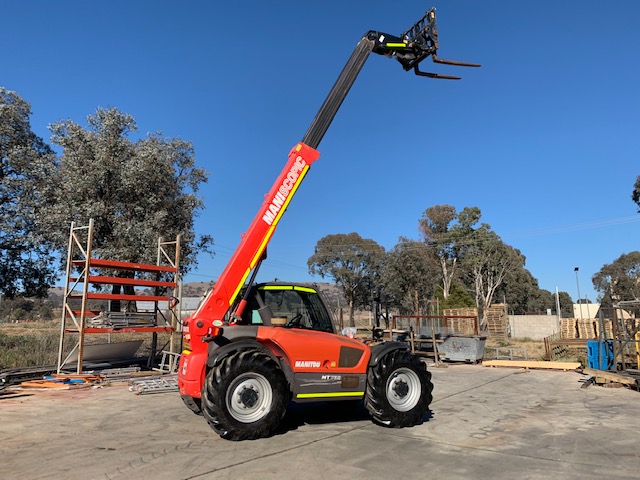
While not strictly a forklift, telehandlers are capable of acting in the place of some forklifts (primarily reach trucks), earning them a place in this article. When combined with pallet forks, telehandlers transform into forklifts with reach heights of over 15m.
Due to their size, telehandlers are primarily an outdoor machine. But there are smaller models available that suit indoor applications in some situations. Telehandler lift capacity is dependent on the length and angle of the boom when it is extended, but some telehandlers are capable of handling upwards of 9 tonnes—or in some cases, like the world-first Magni telehandler, 50 tonnes—making them ideal for lifting heavy pallets or material to high work areas that normal forklifts aren’t able to access.
In addition to heavy lifting and a high reach, telehandlers are compatible with a range of attachments that increase their versatility on your worksite. Things like:
- Work platforms
- Buckets
- Lifting jibs
- Sweepers
This incredible versatility, reach and lifting capacity is why they’re so popular for many major construction projects.
Sideloaders
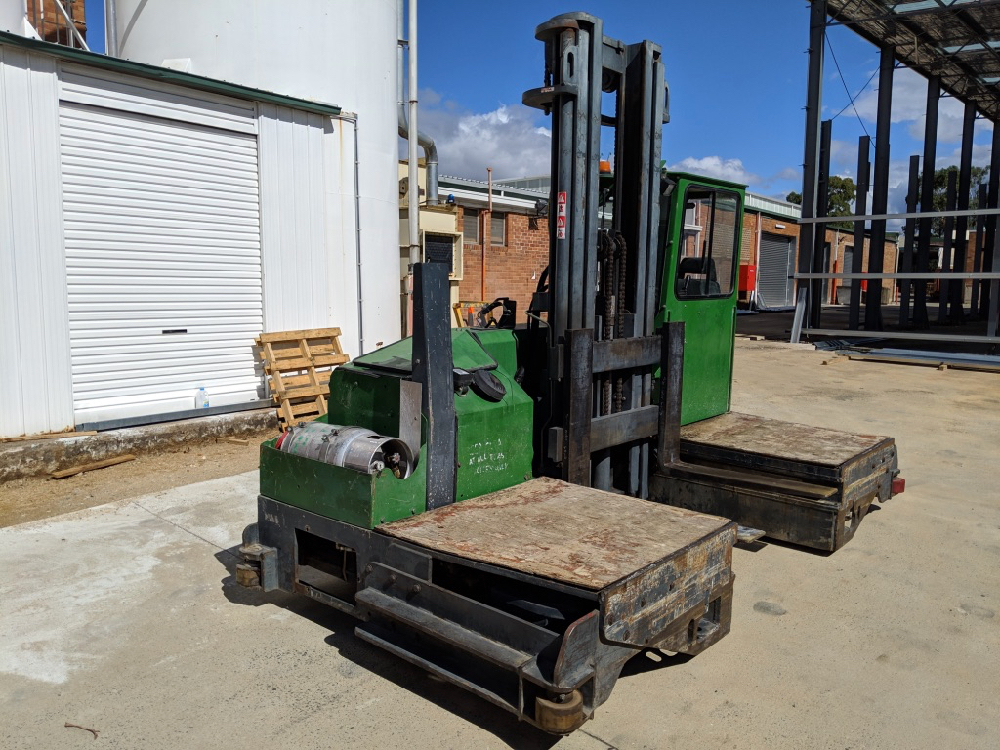
In most cases, a forklift with low manoeuverability is too bulky and unsuitable for tight, indoor areas. But sideloaders are the exception to this rule. Commonly found in industrial manufacturing facilities, sideloaders load and unload objects on their side. This design lets them travel along aisles and hallways without having to turn to unload—making them a great choice for long loads, like timber or steel.
Of course, there are larger models available as well. Often a similar size as a small truck or excavator, these sideloaders are great for moving large, heavy loads around or between worksites. They also eliminate the inconvenience of a full-sized truck driving through your worksite.
Pallet Jacks
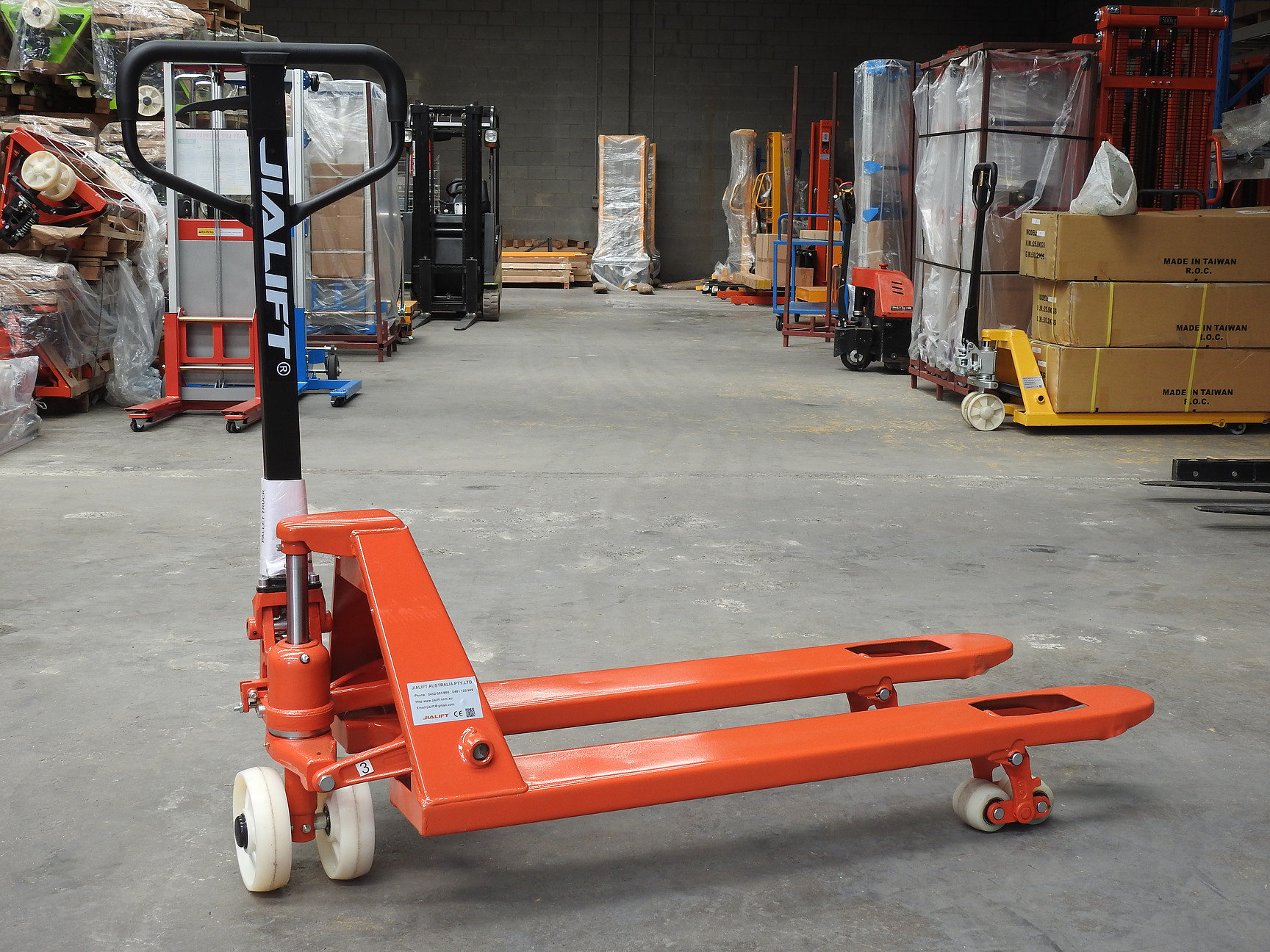
Possibly the most simple yet versatile of all forklift types, pallet jacks are manual machines that are ideal for moving small loads around warehouses or large buildings. While traditional pallet jacks are completely manual, modern models are now often electric-powered, making it easier to move them around efficiently.
While pallet jacks are simple and easy-to-use, they are also very basic and have limitations. They are fantastic at moving small loads from A to B, but they have no lift capacity, so you can only pick things up and then put them back down on the ground. This does limit their uses, but their low price and ease of use make them a popular addition in retail businesses and warehouses.
Walkie Stackers
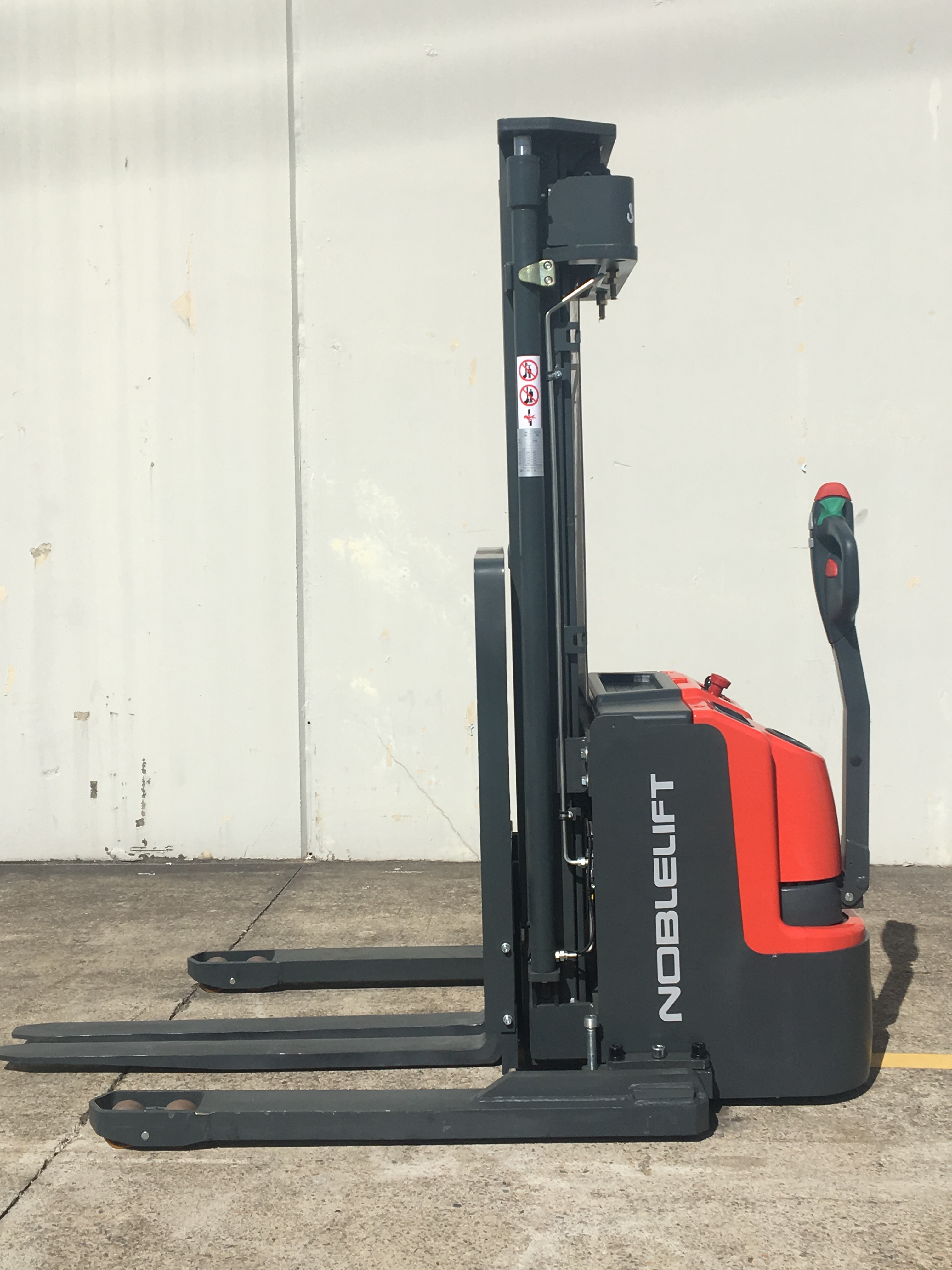
Flexible, easy-to-use and versatile, walkie stackers are a popular forklift that are commonly found through warehouses across Australia. Similar to pallet jacks in design, walkie stackers take it up a notch with a higher reach and more power. So you can move heavier loads quicker.
While you do walk behind most walkie stackers, some have seats or a platform to stand on as you operate. This variety in design gives you plenty of choice to suit your needs and budget.
The biggest benefit in getting a walkie stacker is their manoeuverability. Due to their simple, lightweight design, walkie stackers are easy to turn and manoeuvere around tight corners and through narrow aisles.
However, they do lack the lifting height of reach forklifts or the lifting power of the more traditional forklifts, so carefully consider your needs before deciding whether a walkie stacker is right for you.
Whether you’re in need of a simple pallet jack or want a rough terrain forklift to handle your outdoors work, there’s plenty to forklift types choose from. Browse through our available forklift listings to see what’s available. Or try your luck at a forklift auction.




